Moon House ruin, it’s a hidden gem tucked in a narrow canyon on Utah’s Cedar Mesa. What makes this ancient cliff dwelling special? Exactly where is Cedar Mesa? Why is it worth the effort to get there? Read on for the answers.
Disclosure: This post contains affiliate links. If you buy something from one of our affiliates, we receive a small commission at no extra charge to you. Thanks for helping to keep our blog up and running!
Table of Contents
A Moon House ruin adventure begins
The adventure begins the minute we pull off UT 261 into the parking lot of the Kane Gulch Ranger Station. It’s early April and small patches of winter snow drifts still lie amongst the juniper trees in this high desert. The snowline is low and heavy on the Henry Mountains and Bears Ears are frosted white.
A miscellaneous assortment of cars, SUVs and 4×4 trucks partially fill the small parking lot. It’s 8 a.m. Most of these are backpackers on multi-day trips in Grand Gulch, but there are a few others that have just arrived. We hop out of the truck quickly and head inside to book a Moon House self-guided tour.
The USFS staff member inside must not be a morning person. He doesn’t return our cheerful greetings and doesn’t appear to be overly thrilled to be selling permits and giving out information. Where are those helpful volunteers?
Arriving tomorrow, we discover as the man behind the desk starts to thaw.
“Moon House permits – two, please – for the 15th,” we said with fingers crossed.
We’d checked online and it said that the permits were sold out until the 20th, but we’d heard there are sometimes cancellations when you check in person.
It’s our lucky day! We’re in at $5/person for permits. We read the rules, take a pic of the route info, watch the mandatory “Leave No Trace” video, and check the weather forecast before heading out to set up camp.
Where in the world?
We are in southeastern Utah, up on Cedar Mesa above Goosenecks State Park and less than 15 miles (24 km) southeast of Natural Bridges National Monument. Cedar Mesa is a massive area, covering close to 1.9 million acres.
A large portion of Cedar Mesa became known in recent years as Bears Ears National Monument. The area is sacred to members of many Native American tribes, including the Hopi, Navajo, Ute, and Zuni. This magical, almost mystical area holds over 100,000 archaeological sites – and Moon House ruin is calling our names.
Be sure to check out Edge of the Cedars State Park in Blanding before you go –
it holds a wealth of information that gives a better understanding of
Cedar Mesa’s archaeological wonders.
The route into Moon House
Red dust puffs up in big clouds behind the truck as we roll down Snow Flats Road, passing the Mormon Trail sign, creeping across patches of slickrock, and enjoying tantalizing views of snow-capped mountains in the distance.
It’s a special place that envelopes the senses as you explore deeper. We stop the truck at about 3 miles (5 km) from the highway at the bottom of the first steep hill. Today we’ve opted to bike the rest of the way in. While we could drive further, we want to slow down and savour the approach to McLoyd Canyon.
Hopping on our e-bikes, we pedal for another 6.5 miles (10.5 Km) to the canyon rim parking area. The final 1.5 miles (2.4 km) is a narrow and rougher 4×4 road off Snow Flats Road. Most people park and walk in from here.
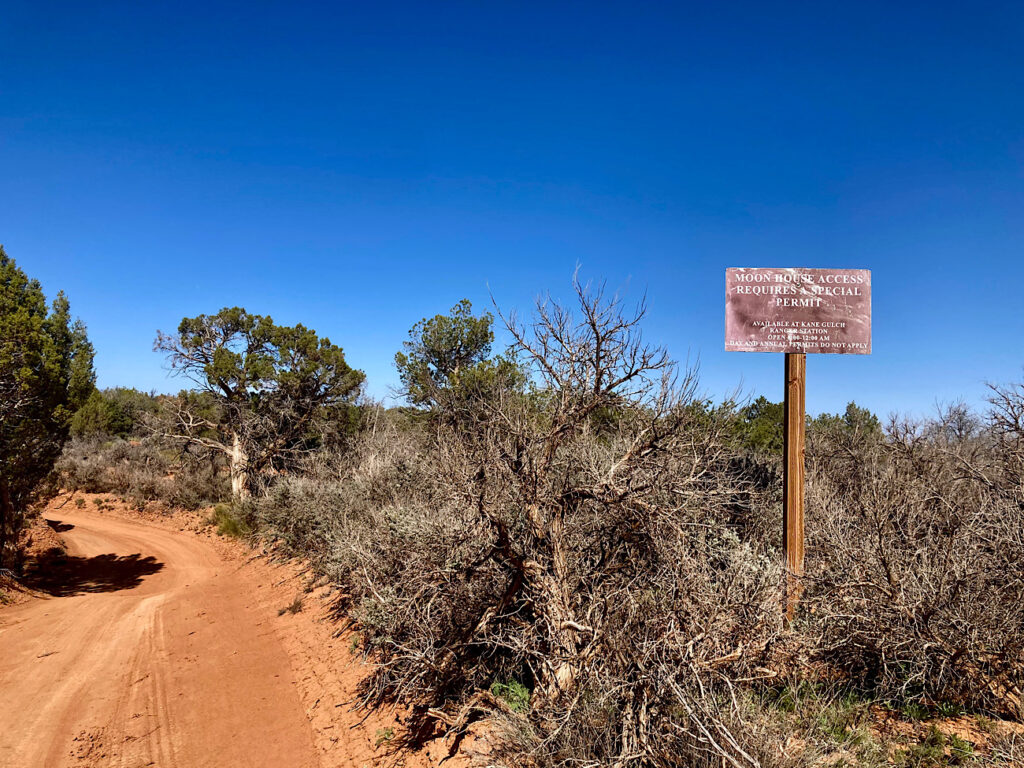
Locking our bikes behind a tall juniper, we follow the cairned path to the lip of the canyon and head down. The route drops 250 ft (76 m) quickly. Part way along there’s a slickrock drop made easier with a stack of boulders at the base of a short pour off formed from a roll of smooth sandstone.
Standing aside and trying to look like we’re not chomping at the bit to get past them, we wait for 10 minutes while two women… well one, actually!… work up enough nerve to find the right approach and footing for the short scramble up. Careful foot placement and slow and steady moves are key.
They pass, eyes averted. We head down.
Exploring Moon House ruin
Arriving at Moon House, with not another soul in sight, we drop our packs and scramble up through the keyhole entrance into the main structure – still open to the public at this point. Having visited Moon House before, we know the magic found in silence when inside this ruin.
It doesn’t disappoint.
Dust puffs up lightly from the floor of the walled cave. Soft orange light filters in behind the thick fortified wall with its 27 spy holes. Colours glow. White painted designs on mortared walls look as fresh as if painted last year. It’s silent… but in that silence I swear you can hear echoes of the past.
We soak up each moment before lowering ourselves back out of the ruin. Another couple have arrived and are awaiting their turn inside. Chatting briefly with the older woman from Vermont who waits while her husband scrambles inside, we learn she’s not keen to go in and it’s really his thing.
I’m stuck on the fact that she made the effort to get here and isn’t going to go another step further. And she doesn’t!
We nod at an another couple who arrive and immediately head off to explore. A third group of four from Grand Junction, Colorado arrive. We chat briefly before pulling back from the crowd to check out the photocopied information sheets in the green metal ammunition box (a common waterproof information container found at more popular BLM archaeological sites).
Quickly scanning the materials, we realise there is nothing new from our last visit several years before. Anxious to get away from the crowd, we move along, exploring remnants of other rooms built along the wide pink sandstone ledge.
Reflecting on the past in the present
Leaving packs in the shade, we walk down past two ghost walls where buildings once sat. A little way further, we pass two crumbled rooms before coming upon four, attached, squared and well-built rooms. Each of them has a high door on the left-hand side of room.
These rooms are different. Each has a constructed roof instead of using the overhang as a ceiling. We spy one small single corn cob and one small sherd of yellowish pottery. We sit down and soak up the spirit that still lingers in this special place. The sun shines on our faces and a canyon wren calls from above.
If you come across an artifact – whether sherd (broken pottery) or lithic (flakes of stone tools) or corn cob – leave it be. Once moved or removed, its connection to the past is lost forever. Besides that, it’s the law!
More ruins to see in McLoyd Canyon
Heading up canyon past Moon House ruin, we spy another high room on the corner. It’s inaccessible now. Continuing upstream along the narrowing ledge, we find a couple of granaries. One is made of stone and standing in near perfect condition. The other is made with a wattle and daub – a mud and stick type of construction. It is in ruins but there are three tiny corn cobs inside.
Continue along, there is a final multi-room structure that we think might have been a kiva, or spiritual center. It has a smooth, brown-colour plastered interior with built-in niches. There is a T-shaped back opening.
What we can’t quite figure out are the two large, perplexing windows or doors opening on the left. There is another room behind the ‘kiva’ and a second room even further back. All we can see is a doorway to another dark space. It’s chained off and marked no entry. Intriguing, but we leave it and continue our wander.
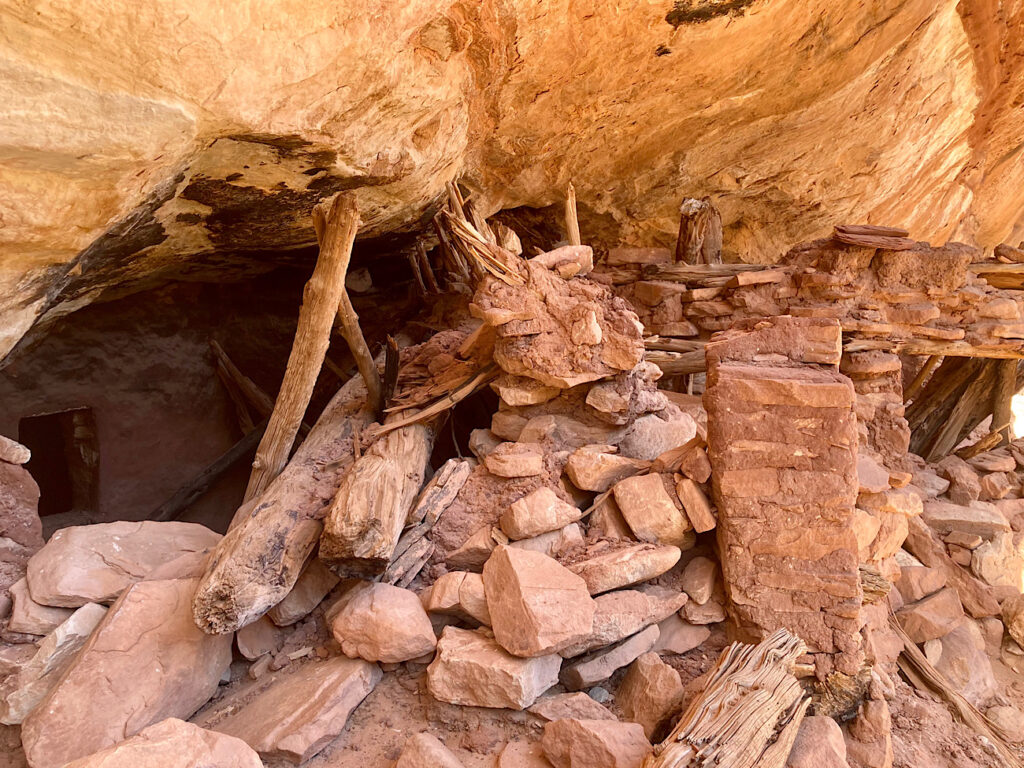
Slightly beyond and up the canyon is a low alcove. We can see reddish brown pictographs. Scrambling up we discover low dry stack walls and a hearth. Sitting down we ponder the rock art. The larger painting is the figure of a man, while the smaller ones are open to debate. Possibly coyotes and a ladder?
Time is up for this visit; next time we’ll continue the exploration where we left off. For now, we work our way down to the creek bottom and follow it back down to the trail to climb back up and out to the parking area.
Even though it’s only half a mile (0.9 km) from creek bottom to our bikes, it’s a world away from the one we just had the privilege of exploring.
Love exploring cultural sites?
Check out this list of 50+ Cultural Sites in Arizona available in our Etsy shop.
When you go
Cedar Mesa – which includes Bears Ears National Monument – is a remote and primitive area. There are two information centers: Kane Gulch Ranger Station (open half-days, seasonally) and the visitor center at Natural Bridges National Monument (open daily, 9 a.m – 4 p.m.). Cell phone service is unreliable. The closest gas station or grocery store is in Blanding. Plan ahead.
Permits for Moon House ruin
Permits are required to visit Moon House. There are 20 permits available per day during high-use seasons (Mar 1st – Jun 15th and Sept 1st – Oct 31st). They can be reserved up to 3 months in advance online at Recreation.gov. You can also call the Cedar Mesa Permit Desk at (435) 587-1510 – open Monday through Friday, 8 a.m. – 12 noon.
Permits are available for reservation up to 3 days prior to your visit. After that they can be purchased in person at the Kane Gulch Ranger Station or the Monticello Field Office (365 North Main Street, Monticello).
All permits – including those reserved in advance – must be picked up in person on the day of your trip at the Kane Gulch Ranger Station between 8:00 a.m. and 12:00 noon. Permits cost $5/person for Moon House (in 2024).
During low use seasons (Nov 1st – Feb 28th and Jun 16th – Aug 31st), self-pay envelopes and registration forms are available at the trailheads.
Directions
Kane Gulch Ranger Station is located about 4 miles (6.4 km) south from the junction of UT 95 on UT 261. Moon House is accessed via the Snow Flat Road – 6 miles (9.6 km) south of the ranger station. High clearance vehicles recommended. Like all unpaved side roads in Cedar Mesa, the road can become impassable when wet. Be sure to check the weather before your trip.
Camping while exploring Cedar Mesa
There are limited options for camping on Cedar Mesa. First choice is the campground at Natural Bridges National Monument. The small, 13-site, first-come, first-served campground is open year-round. Each site has a picnic table and tent pad, but no running water, electricity, or hookups.
Goosenecks State Park is another established campground somewhat nearby – but accessing Cedar Mesa via the Moki Dugway not recommended for large RVs and trailers. The switchbacking, gravel section of the southern end of UT 261 climbs at a 10% grade for 2 miles (3.2 km). The campground at Goosenecks has 8 sites with picnic tables and fire rings, all first-come, first-served. Vault toilets are the only services provided.
Cedar Mesa offers primitive, dispersed camping (14-day limit) at well-established campsites is permitted on many of the dirt roads managed by the Bureau of Land Management. It works well if you are self-contained. All campers are expected to “Leave No Trace”, which includes packing out all garbage – including toilet paper – and burying human waste at least 200 feet (61 m) from water sources.
Some RVers prefer to day trip out from Blanding for Moon House tours. We’ve stayed at both Blanding RV Park and Blue Mountain RV Park in the past while exploring the Four Corners area. It’s about a 35-mile (56 km) drive, one-way, from Blanding to the Kane Gulch Ranger Station.
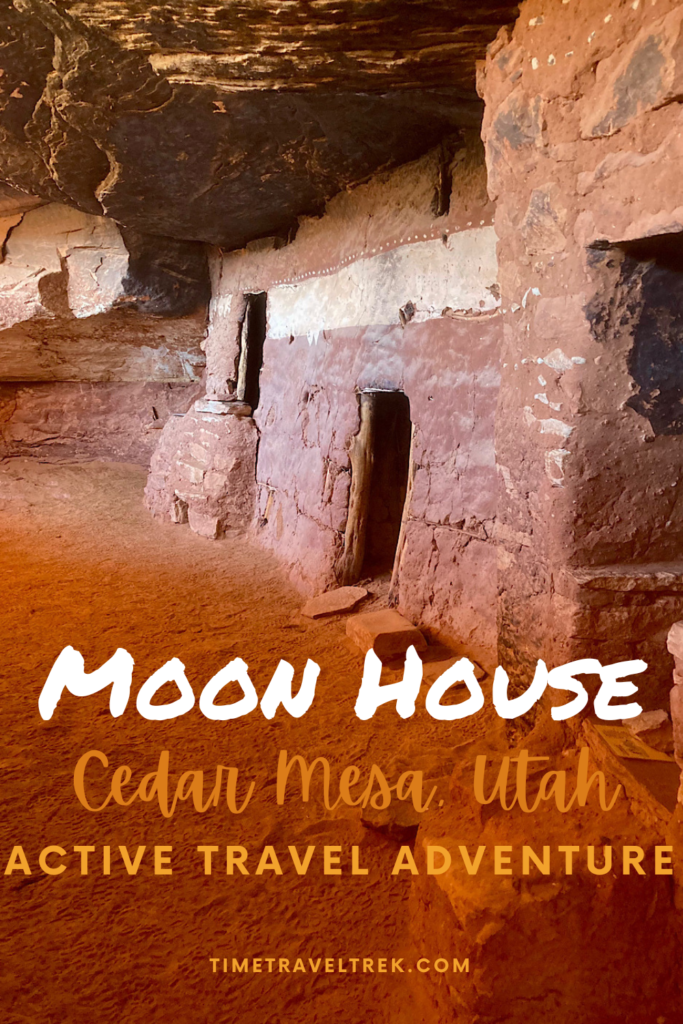
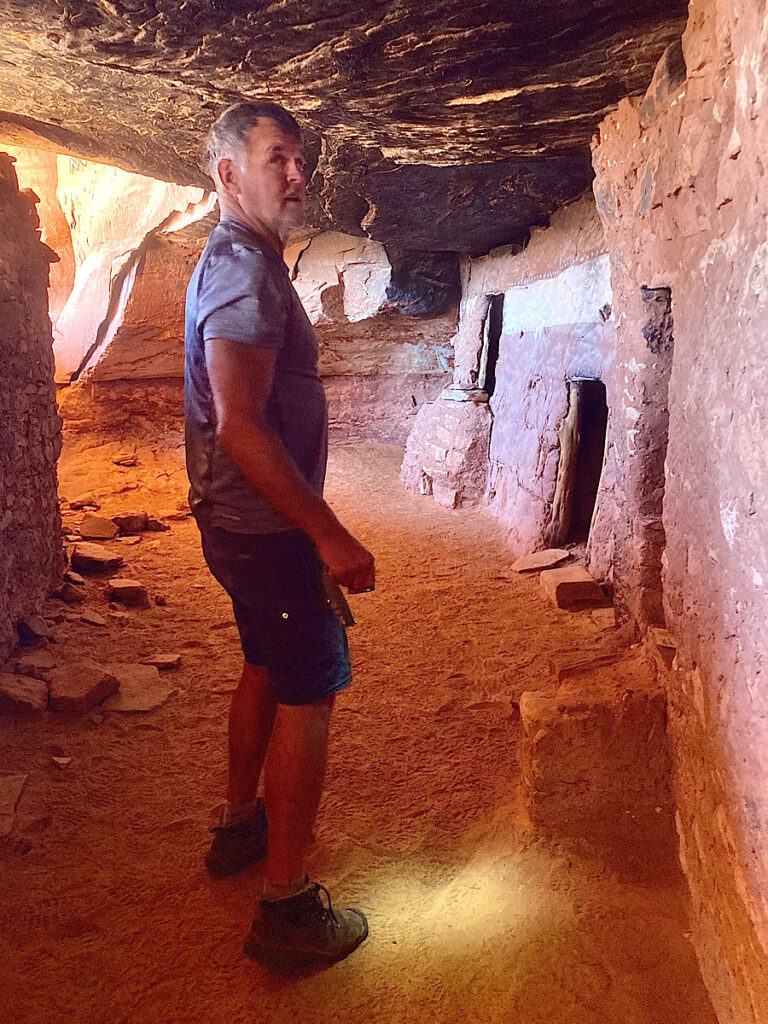
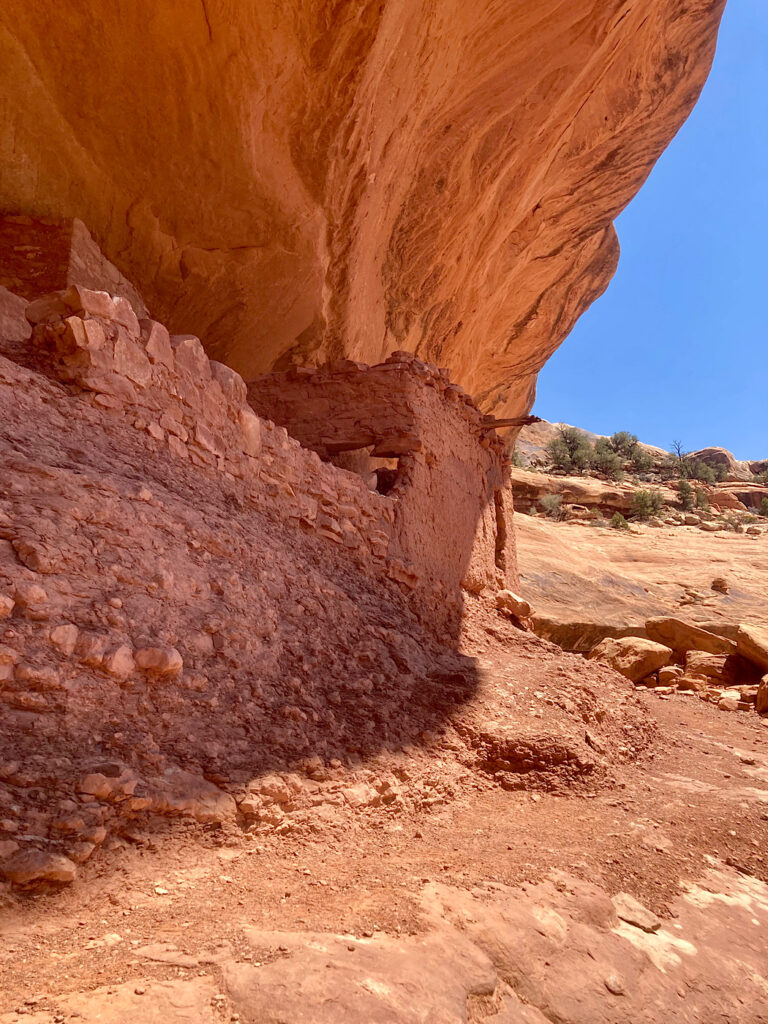
Leave a Reply